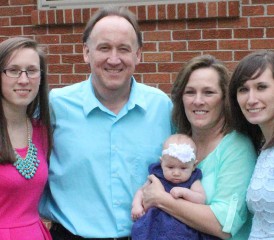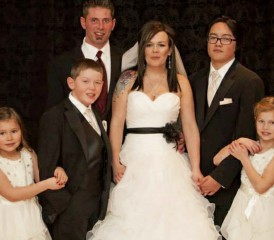Extraordinary Grandmother Nears 10-Year Survival

Written by Tim Povtak | Edited by Walter Pacheco | Last Update: 10/24/2024 | 5 Min Read
Sandy Mulcahey does more with one lung, a missing rib and a rebuilt diaphragm than most who still have all their original parts.
Malignant pleural mesothelioma didn’t stop her.
It made her stronger.
Mulcahey, 66, is becoming an inspiration to cancer patients everywhere as she moves toward the 10-year survivor mark, proving that life doesn’t end with a devastating, life-changing mesothelioma diagnosis.
This rare and aggressive cancer can be beaten with a more aggressive approach to therapy.
“Maybe it’s the Irish in me. I don’t know for sure,” she said from her home near Providence, Rhode Island. “I was lucky in a lot of ways. We caught the mesothelioma early, and I had a great surgeon, the best, but I also think my attitude, my faith, has something to do with this, too. Only one person, God, is going to tell me how long I can live.”
Mulcahey underwent an extrapleural pneumonectomy (EPP) at Brigham and Women’s Hospital on Feb. 1, 2006, shortly after renowned surgeon Dr. David Sugarbaker confirmed her original diagnosis. He removed one lung, the lining around it, major parts of her diaphragm, a rib and the lining around her heart.
Giving Back to Others
And after a grueling, 18-month recovery period, she bounced back with a new appreciation for life and all those living around her, the same sense of humor, and a dedication to helping others.
She now makes the 90-minute drive regularly back to Brigham and Women’s, where she welcomes newly diagnosed patients, offering advice, hope, and someone who can understand their fears.
“I hear a lot of people ask ‘Why me? Why did I get this disease?’ Well, I always say, ‘Why not me?’ It’s got to be somebody. And better me than one of the kids,” she told Asbestos.com. “There are no guarantees in life. When you start the car and leave home in the morning, there’s no guarantee that you’ll return home that night. You just make the best of the hand you’re dealt.”
Mulcahey spends much of her time taking care of others and herself. She regularly tends to three grandchildren, ages 3, 5 and 7; an elderly aunt in failing health, a cousin with a disability and her husband of more than 20 years.
She also does regular shifts volunteering at her local hospital, working in the surgical waiting room and recovery room. She takes yoga classes and walks two miles with friends three or four times each week.
“I don’t dwell on this disease. I try to forget what I have. It just taps me on the shoulder and lets me know when I climb stairs, or walk too fast and get out of breath. But I don’t flop down on a couch. I just stop and catch my breath. It comes back,” she said. “I’m fortunate. The rest of me feels fine.”
She still cleans house and does laundry in the basement. Climbing steps with a load of clean clothes leaves her winded, but it’s nothing she can’t handle.
“I shake it off. It’s just a bump in the road,” she said. “I’m not ready to concede anything yet. I tell patients you’ll have good days and bad days, but stay positive. And don’t feel sorry for yourself. Keep going.”
Diagnosed Early by Accident
Her mesothelioma was discovered early, literally by accident. During a late-summer outing on the water, she had clumsily fallen off the back of her boat and into the outboard motor, bruising her ribs. When the pain failed to subside after a few days, she went for X-rays.
They discovered fluid on her lungs that returned each time they drained it, puzzling her doctors. It led to a progression of more and more tests, which eventually led to a diagnosis of pleural mesothelioma.
Although she had never worked with asbestos, the primary cause of mesothelioma, she believes it was a secondhand exposure possibly from her father’s work clothes or the insulation in her childhood home.
“I was only 57 [when diagnosed]. They said I was otherwise healthy. I didn’t smoke, but I do indulge. I’m Irish, after all,” she said. “They took a rib out, but they did that to Adam, too, and he was okay.”
Surgery Was an Easy Decision
The decision to undergo the EPP, the most aggressive surgery possible for mesothelioma, was not a difficult one for her. It fit her all-in personality, where nothing is done halfway.
“It was a no brainer. When you’re first told you have 4-12 months to live, you want to do everything you can. I tell people it was like going to New Hampshire: Live free or die,” she said. “If you don’t want to die, you get the surgery.”
The number of follow-up scans dropped over the years, going from every three months, to six months and now every 12 months. Her next CT scan is in May.
“My faith has been strengthened by this. It’s no coincidence I’m still here. There must be a reason. Maybe it’s to help others. And I appreciate more everything that I have,” she said. “I’m honest when I tell others the surgery and recovery was brutal, but it was worth the fight. I’ve lived longer than anyone expected. And I’m still cute as a button.”






